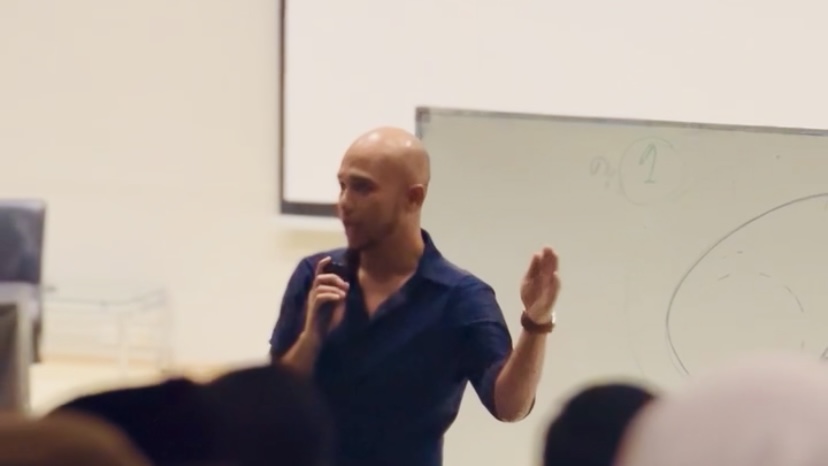Becoming a lecturer is a noble profession. It offers not only a career but also a meaningful way to leave behind a legacy of knowledge. After all, when we leave this world, everything we own stays behind—except three things: charity, the prayers of a righteous child, and the knowledge we pass on. That last part is what makes this profession special.
But before you dive into academia, there’s an important decision to make: Should you start your lecturing career after earning a Master’s degree or wait until you complete a PhD? Let’s break it down based on my own experience.

The Path of a Lecturer: Career Growth & Strategy
There are two career paths for lecturers in higher education: structural and functional. Ideally, you can pursue both, but it’s common for lecturers who are too busy with administrative duties to struggle with functional promotions. In the worst cases, some take shortcuts by claiming credit for others’ work—but let’s not talk about them. Karma has its way, and we’ll leave them to it.
In the functional track, the highest academic rank is Professor, which requires an accumulated academic credit score (called kum in Indonesia) of 1,050 points (IVe rank). There’s no higher rank than this.
- If you start your lecturing career with only a Master’s degree, your initial rank will typically be Assistant Expert (kum 150).
- If you begin with a PhD, you start at a higher level—Assistant (kum 200).
Here’s the full career progression:
- Lecturer Candidate
- Assistant Expert – kum 150
- Assistant – kum 200
- Assistant – kum 300
- Associate Professor – kum 400
- Associate Professor – kum 550
- Associate Professor – kum 700
- Professor – kum 850
- Full Professor – kum 1,050
To progress through these ranks, you must meet all academic obligations, including teaching, research and publishing, and community service. On top of that, there are bonus activities—not major requirements but helpful for accumulating points. But of course, a solid strategy is essential.

My Personal Journey: From Assistant to Associate Professor
I started my journey as a lecturer at 31 years old in 2015. By late 2016, at almost 32, I reached the Assistant (kum 200) rank. But from 2016 to 2024, I didn’t move up a single step.
By the time my university reviewed my academic credits, I had already accumulated 1,000 kum points—technically enough to qualify as a Professor. However, there was a catch.
Jumping five levels at once (from Assistant 200 to Professor 850) was considered too steep. Plus, another issue: I had not reached the 10-year minimum required between my first academic rank and applying for Professorship.
With those two roadblocks, the most strategic option was to apply for Associate Professor 700 instead. And that’s where I stand today.

So, What’s the Best Path?
If you want to become a professor as quickly as possible, your first academic promotion matters the most. If you finish your Bachelor’s (S1) and Master’s (S2) without delays, you can start as a lecturer at 25 years old. That’s why, nowadays, it’s not surprising to see professors under 40 years old.
But here’s the biggest challenge: If you start as a lecturer with only a Master’s degree, you’ll eventually need a PhD to become a professor.
And that’s where things get tricky.

The Hidden Struggles of Pursuing a PhD While Being a Lecturer
For lecturers with a Master’s degree who want to continue their PhD while working, it’s not as simple as just asking for approval. In most universities, there’s a hierarchy and an unwritten rule:
The longer you wait, the harder it gets.
If a lecturer doesn’t get the chance to start a PhD before 35, their opportunities shrink. Why? Because academia isn’t just about science—it’s also about politics. Decisions on who gets support (funding, approval, or workload adjustments) can sometimes be based on preferences (like-dislike culture), not just merit.
There are also financial risks. Unless you’re a high-ranking official (like a dean or rector), taking a PhD break might strip you of administrative positions, drastically reducing your income. Imagine going from a comfortable salary to just basic pay while still having to fund your studies. That’s a tough pill to swallow.
But then again, there are exceptions. Some people hold important university positions while completing their PhDs smoothly. Some even juggle government jobs while earning their doctorate—proving that, yes, if you have the right network, it’s possible to manage both.
For those without such privileges, patience is key. Your time will come.

Final Advice: What’s the Smarter Move?
So, should you start lecturing with a Master’s degree or wait until you finish a PhD?
Here’s my take:
- If you have financial support and can afford to study without working full-time—go straight for a PhD. The earlier you complete it, the faster your career will progress.
- If you need to work to support yourself or your family, prioritize securing a scholarship for your PhD. Instead of struggling as a Master’s-only lecturer, it’s better to fight for a fully-funded PhD.
In short, it’s all about strategy. Academia isn’t just about intelligence—it’s also about making the right moves at the right time. Plan wisely, and your path to professorship will be much smoother.
Good luck! 🚀



